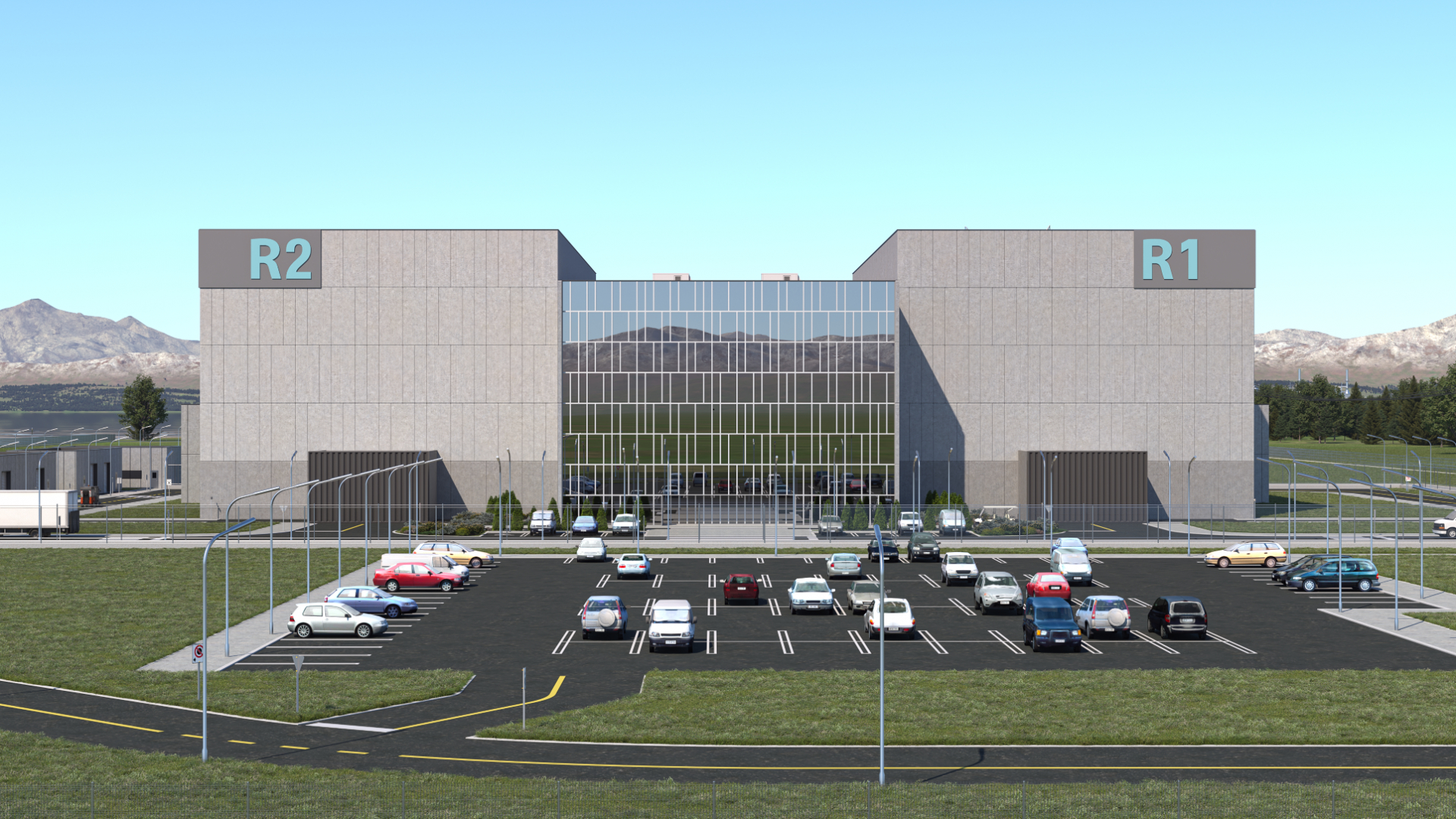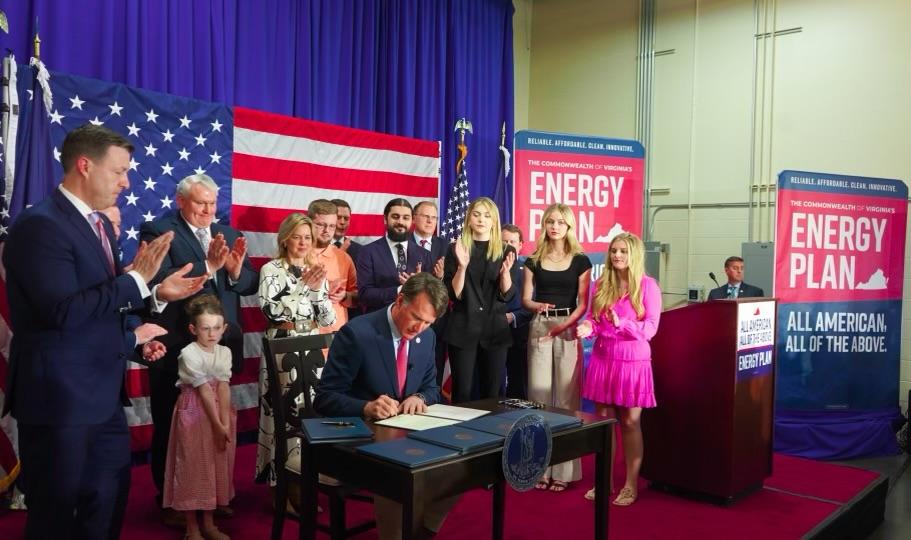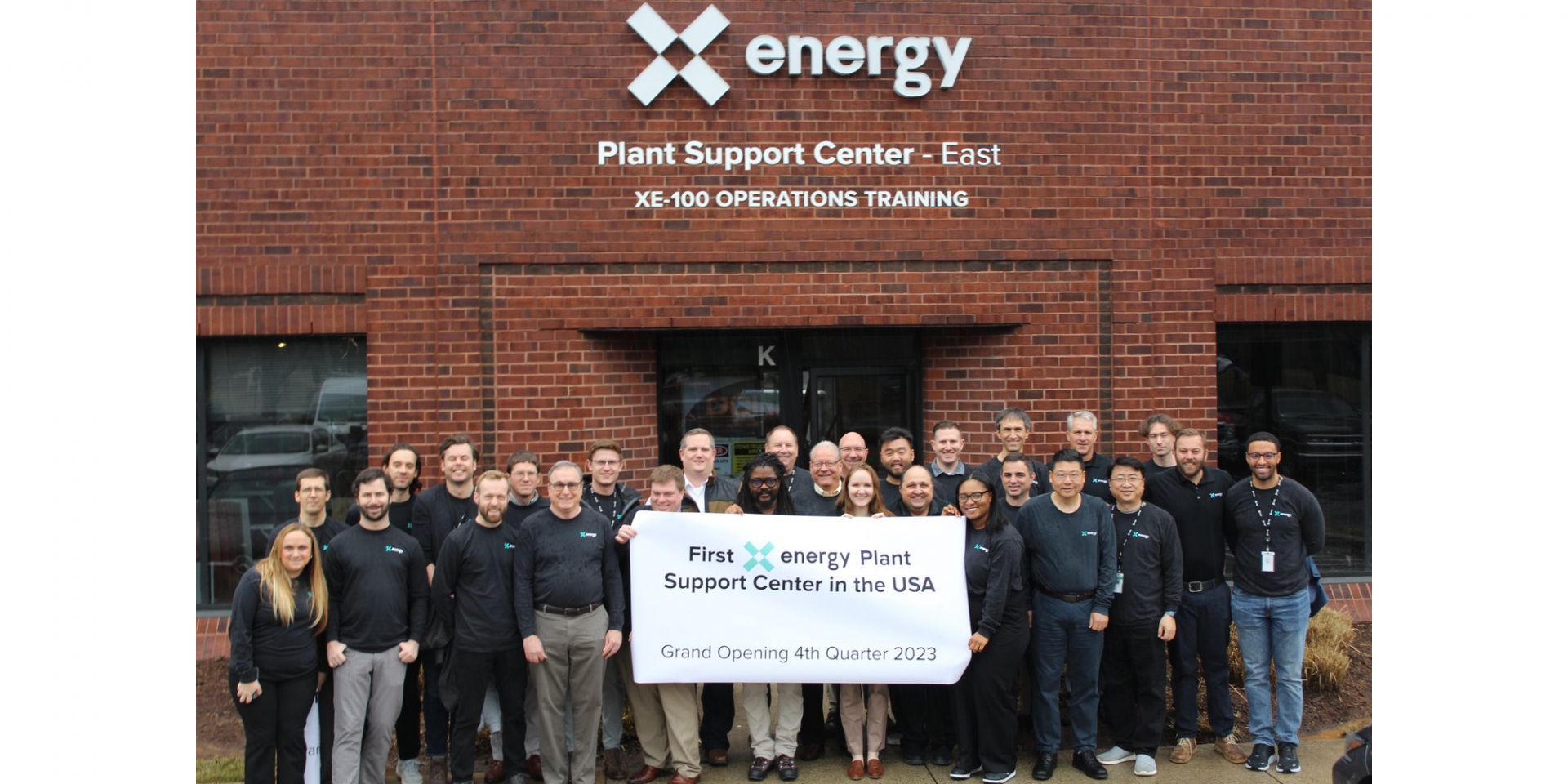President Biden and Prime Minister Sunak chatted in the Oval Office last week during meetings to announce the Atlantic Declaration for a Twenty-First Century U.S.-U.K. Economic Partnership. (Source: Twitter/Rishi Sunak)
At a joint press conference in the White House East Room last week, President Biden and U.K. Prime Minister Rishi Sunak—in Washington for two days of discussions with the president, members of Congress, and business leaders—debuted a new bilateral agreement dubbed the Atlantic Declaration for a Twenty-First Century U.S.-U.K. Economic Partnership.
An illustration of an IMSR plant. (Image: Terrestrial Energy)
Ontario–based Terrestrial Energy announced yesterday that its U.S. branch has been awarded a regulatory assistance grant from the Department of Energy to support the company’s Nuclear Regulatory Commission licensing program for the Integral Molten Salt Reactor (IMSR) plant.
A rendition of Terrestrial Energy’s IMSR. (Image: NRC)
The Canadian Nuclear Safety Commission (CNSC) has completed phase two of its prelicensing vendor design review for Terrestrial Energy’s Integral Molten Salt Reactor (IMSR), the Ontario-based advanced nuclear technology firm announced Tuesday. Phase one of the VDR commenced in April 2016 and was completed in November of the following year.
Virginia Gov. Glenn Youngkin participates in a bill-signing ceremony at Energy DELTA Lab in southwest Virginia. (Photo: Christian Martinez/Office of Gov. Glenn Youngkin)
Declaring it a “great day for Virginia energy and American energy,” Gov. Glenn Youngkin on March 23 signed a number of bills to further his state’s all-of-the-above energy plan, including some measures sure to please nuclear energy advocates. Launched in October of last year, the Virginia plan touts nuclear among other energy sources and calls for deploying a commercial small modular reactor in southwest Virginia within the next 10 years.
A rendering of an eVinci microreactor facility. (Image: Westinghouse)
Westinghouse Electric Company has filed a notice of intent to submit key licensing reports for its eVinci microreactor to the Nuclear Regulatory Commission and Canadian Nuclear Safety Commission for joint review, the firm announced last week. (The two nuclear regulators signed a memorandum of cooperation in August 2019 to increase collaboration on the technical reviews of advanced reactor and small modular reactor technologies.)
The NuScale control room simulator has been used to showcase the plant’s design, prototype new displays, and test the operator and supervisor procedures in a fully digital control room. (Photos: NuScale Power)
Since the inception of commercial nuclear power in the United States, every control room in every nuclear plant has looked essentially the same. You will see fixed alarm tiles, red and green lights, rows of switches, and analog meters. Until about a decade ago, you would even have seen paper charts (now replaced by digital versions of those same charts). Licensed operators have shown through a proven operating history that this control room design is safe and effective. Genius definitely went into the complexity of circuits and placement of switches and indications in the design, but things have come a long way over the years, and new technology, updated plant designs, and the need to improve efficiency and maintain reliability have impacted staffing and the role of operators. A control room update is long overdue. So, what lies ahead for the future of nuclear control room design? What possibilities exist for the next generation of plants?
Artist’s rendering of the IMSR Core-Unit. (Credit: Terrestrial Energy)
In the ongoing quest to mitigate the effects of climate change, new technology can create new solutions. Even today, however, coal is still a main source of power around the globe, often out of necessity. Many coal-burning plants have already been converted for gas or biomass, but these measures alone are not nearly enough to meet net-zero carbon goals. There is a better solution, however: repowering coal plants with nuclear technology—specifically, Generation IV reactors.
Artist's rendering of Shin-Hanul Units 3 and 4. (Image: KHNP)
South Korea’s new president, Yoon Suk-yeol, appears to be following through on his campaign pledge to reverse the previous administration’s domestic nuclear phaseout plan. Earlier this month, Yoon’s Ministry of Trade, Industry, and Energy announced a new direction for the nation’s energy policy—one that calls for, among other things, a reembrace of nuclear power. A further announcement on the subject last week provided additional details.
François-Philippe Champagne, Canada’s minister of innovation, Science, and Industry (center, foreground), visited Westinghouse Electric Canada’s Burlington, Ontario, facility for the March 17 announcement. (Photo: Westinghouse)
The Canadian government has announced an investment of C$27.2 million (about $21.6 million) in Westinghouse Electric Canada to support the development of the company’s eVinci microreactor technology.
François-Philippe Champagne, Canada’s minister of Innovation, Science, and Industry, made the announcement on March 17 during a visit to the company’s Burlington, Ontario, facility.















.jpg)